A Comprehensive Comparison of Milk Powders: Here’s an article exploring the world of milk powders and comparing different types of dairy milk powder, including skim milk powder, whole milk powder, buttermilk powder, and fat-filled milk powder, based on some properties such as ingredients, nutritional composition, price, best brands, Storage Conditions, usage, taste, color, and flavor.
Dairy industrial milk powders
Dairy industrial milk powders have become an integral part of the modern food industry, offering convenience and versatility. With various types available, it’s essential to understand their unique characteristics and applications. In this article, we delve into the properties of four popular dairy milk powders—skim milk powder, whole milk powder, buttermilk powder, and fat-filled milk powder—to help you make informed choices.
Types of dairy milk powders are also known by various other names depending on the region and context. Here is,
Skim Milk Powder (SMP)
Some alternative names for skim milk powder include:
Non-fat Dry Milk
Non-fat Milk Powder
Fat-free Dry Milk
Fat-free Milk Powder
Skimmed Milk Powder
Skimmed Milk Solids
Skim Milk Solids
Skimmed Milk Dry Powder
Skim Milk Dry Powder
Low-fat Dry Milk
Low-fat Milk Powder
Whole milk Powder (WMP)
Some alternative names for whole milk powder include:
Full Cream Milk Powder
Full Fat Milk Powder
Full Cream Dairy Powder
Full Cream Milk Solids
Full Fat Milk Solids
Whole Milk Solids
Whole Milk Dry Powder
Full Cream Dry Milk
Full Fat Dry Milk
Full Cream Milk Dry Powder
Full Cream Powdered Milk
Buttermilk Powder (BMP)
Some alternative names for buttermilk powder include:
Dried Buttermilk
Buttermilk Solids
Buttermilk Dry Powder
Powdered Buttermilk
Cultured Buttermilk Powder
Dehydrated Buttermilk
Buttermilk Dairy Powder
Buttermilk Concentrate
Buttermilk Granules
Fat-Filled Milk Powder (FFMP)
Some alternative names for fat-filled milk powder include:
Filled Milk Powder
Filled Dairy Powder
Cream-Filled Milk Powder
Filled Milk Solids
Filled Milk Dry Powder
Reconstituted Milk Powder
Fat-Extended Milk Powder
Cream-Enhanced Milk Powder
Milk Fat Blended Powder
Ingredients of Different Types of Milk Powder
Skim Milk Powder: Skim milk powder is produced by removing the fat content from fresh milk. It primarily contains lactose, proteins (including casein and whey proteins), and traces of minerals.
Whole Milk Powder: Whole milk powder retains the natural fat content found in fresh milk. It consists of lactose, proteins (casein and whey proteins), essential minerals, and vitamins.
Buttermilk Powder: Buttermilk powder is derived from the liquid left after butter churning. It contains lactose, proteins, and a slightly higher fat content than skim milk powder.
Fat-Filled Milk Powder: Fat-filled milk powder is a blend of skim milk powder and vegetable fats. It contains lactose, proteins, vegetable fats, and added emulsifiers.
Here’s a table summarizing the approximate composition ranges for lactose, fat, protein, ash, and calorie content in percent for different types of milk powders:
| Milk Powder | Lactose | Fat | Protein | Ash | Calories
(kcal per 100g) |
| Skim Milk Powder | 50-55% | <1.5% | 34-38% | 8-9% | 350-400 |
| Whole Milk Powder | 35-40% | 26-28% | 24-26% | 5-6% | 500-550 |
| Buttermilk Powder | 50-55% | 3-5% | 33-37% | 7-9% | 350-400 |
| Fat-Filled Milk Powder | 35-45% | 15-30% | 10-15% | 6-8% | 450-550 |
Notice that these ranges are approximate and can vary depending on the specific brand, manufacturing process, and other factors. It’s always a good idea to check the product labels or contact the manufacturer for precise nutritional information.
Nutritional Composition of Milk Powders
Each type of milk powder has a distinct nutritional composition:
Skim Milk Powder: Low in fat and calories, high in protein, and rich in minerals.
Whole Milk Powder: Contains moderate levels of fat, calories, and protein, providing a well-rounded nutritional profile.
Buttermilk Powder: Similar to skim milk powder but with slightly higher fat content.
Fat-Filled Milk Powder: Higher in fat and calories due to the added vegetable fats.
Price and Availability of Milk Powders
Prices of milk powders vary depending on many factors such as brand, quality, and region. Generally, skim milk powder tends to be more affordable than whole milk powder, this is mainly because SMP is produced by removing the milk fat from whole milk, which reduces the cost associated with processing and storage of the fat component. As an estimate, the price for SMP can range from $1.50 to $3 per kilogram and the price range for whole milk powder can be around $2.50 to $5 per kilogram.
The price range for fat-filled milk powder can vary, but it is generally more affordable than whole milk powder due to the use of vegetable fat as a partial substitute for milk fat. Fat-filled milk powder is often used as a cost-effective alternative to whole milk powder. As an estimate, the price can range from $2 to $5 per kilogram.
Buttermilk powder is typically priced higher compared to other types of milk powder due to its specialty nature. The price can vary based on factors such as production methods, brand reputation, and availability. As an estimate, the price range for buttermilk powder can be around $4 to $8 per kilogram.
Best Brands of Milk Powder in the World
Several reputable brands offer high-quality industrial milk powders. It’s important to consider factors such as reliability, sourcing, and reputation. While it’s subjective to determine the “best” brand as preferences may vary, the table below shows some well-known brands that are recognized for producing milk powder in the world:
| Brand | Country of Origin |
| Nestlé | Switzerland |
| Fonterra | New Zealand |
| Danone | France |
| Arla Foods | Denmark |
| Dairy Farmers of America | United States |
| Saputo | Canada |
| Murray Goulburn Co-operative Co. Limited | Australia |
| Glanbia | Ireland |
| FrieslandCampina | Netherlands |
| Lactalis | France |
Taste, Color, and Flavor of Different types of Milk Powder
Skim Milk Powder: It has a mild, slightly sweet taste with a pale white color.
Whole Milk Powder: Offers a rich, creamy flavor and a creamy white color.
Buttermilk Powder: Provides a tangy, slightly acidic taste and a creamy yellow color.
Fat-Filled Milk Powder: Similar to whole milk powder, it offers a creamy flavor with a slightly higher richness due to the added vegetable fats.
Applications of Milk Powders
Skim Milk Powder: Ideal for applications requiring low-fat content, such as baking, smoothies, and protein shakes.
Whole Milk Powder: Suitable for various culinary purposes, including baking, coffee and tea whitening, confectionery, and dairy-based beverages.
Buttermilk Powder: Frequently used in baking, pancake mixes, and as a flavor enhancer in savory dishes.
Fat-Filled Milk Powder: Often used as a cost-effective alternative to whole milk powder in food.
Dive into this insightful read, The Buttermilk Role in Perfecting Ice Cream Delight, and discover the fascinating process of crafting ice cream from buttermilk.

Here’s a table outlining the common uses of different dairy milk powders:
| Dairy Milk Powder | Common Uses |
|
Skim Milk Powder |
Baked goods (cakes, cookies, muffins, bread) |
| Hot beverages (tea, coffee, hot chocolate) | |
| Smoothies and shakes, soups and sauces | |
| Desserts (custards, puddings, ice creams) | |
| Dairy Products | |
| Pancakes and waffles | |
|
Whole Milk Powder |
Baked goods (bread, cakes, pastries) |
| Hot beverages (tea, coffee, hot chocolate) | |
| Desserts (custards, puddings, ice creams) | |
| Cream-based sauces | |
| Yogurt and fermented products | |
|
Buttermilk Powder |
Baked goods (pancakes, biscuits, scones) |
| Buttermilk pancakes and waffles | |
| Dressings and marinades | |
| Fried chicken coating | |
| Beverage mixes (buttermilk-based drinks) | |
|
Fat-Filled Milk Powder |
Beverage mixes (hot chocolate, coffee creamers) |
| Baked goods (cakes, cookies, pastries) | |
| Confectionery (chocolates, candies) | |
| Ice cream and frozen desserts | |
| Sauces and dressings |
You can also check out this video: Choosing the Right Milk Powder for Every Application
Read More: Is Your Milk Powder Safe to Use? Quality Assessment & Storage Tips
Read More: Milk Products – Understanding Ingredients







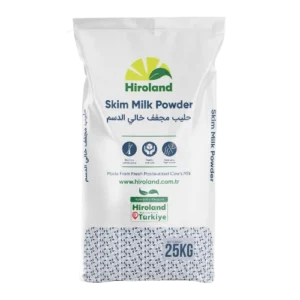
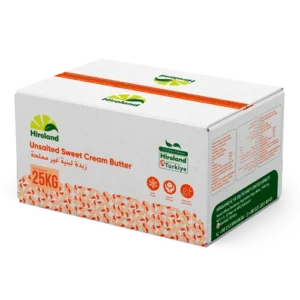
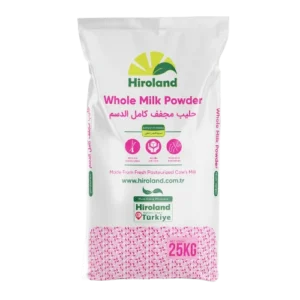
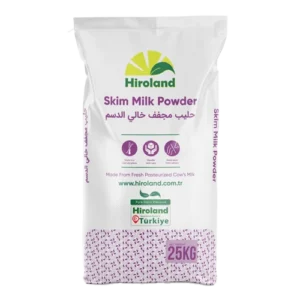
20 thoughts on “Exploring the World of Milk Powders: A Comprehensive Comparison”
Ahaa, its pleasant conversation on the topic of
this paragraph at this place at this blog, I hsve read all that, so at this
time me also commenting here. https://www.Waste-ndc.pro/community/profile/tressa79906983/
Thanks for joining the conversation! Great to hear your thoughts
Hello
I wanted information about the milk powder production process and the production steps, and I wanted to know about the production process in the film evaporator.
thanks
Thank you for your message. If you’re looking for detailed information about the milk powder production process, feel free to check out our other blog post here: https://hiroland.com.tr/guide-to-the-milk-powder-production-line/. Hope you find it helpful!
Your style is really unique in comparison to other
folks I have read stuff from. Thanks for posting when you have the opportunity, Guess I will just book mark this site.
Thanks so much for your feedback. Feel free to follow for future updates!
Simply want to say your article is as amazing. The clearness for your submit is just spectacular and that i can suppose you are knowledgeable in this subject.
Well together with your permission let me to seize your feed to stay updated with approaching
post. Thanks one million and please keep up the enjoyable work.
Thank you so much for your feedback. I’m glad you found the article helpful. Stay tuned for more.
Great
Идеи для подарков, интерьера и личного использования – всё, что можно сделать своими руками https://artisanalcrafts.ru/
Metabolic Freedom reveals why most diets fail and how to fix your metabolism once and for all. https://metabolicfreedom.top/ metabolic freedom reviews
Tu tiempo es valioso. No lo gastes en tratar de cambiar a quienes no quieren cambiar. https://lateorialetthem.top/ mel robbins let them theory epub
This 30-day plan tackles insulin resistance, inflammation, and hormonal imbalance at the root. https://metabolicfreedom.top/ metabolic freedom ben azadi
Unlock true metabolic health with a science-backed 30-day reset from the founder of Keto Kamp. https://metabolicfreedom.top/ metabolic freedom book summary
?Te sientes atrapado en el drama ajeno? Sal de ahi. Tu energia es demasiado valiosa para perderla. https://lateorialetthem.top/ the let them theory synopsis
Escape the diet rollercoaster. Metabolic Freedom offers a smarter, sustainable path to real health. https://metabolicfreedom.top/ metabolic freedom pdf free
Deja de dar poder a quienes no lo merecen. Tu felicidad debe ser tu prioridad numero uno. https://lateorialetthem.top/ pedir prestado the let them theory
Hola buen dia estimados, nos coomunicamos con ustedes para sabe si cuentan con leche en polvo entera para que podamos inportarla, CIF colon panama manzanillo, cantidad un contenedor via maritima.
Somos hunimar y nos alegra poder enviar este mensaje, es para poder realizar una cotizacion.
Requerimos si es posible COA, data sheet and MSDS.
Thank you for your message.
Please get in touch with our export team using the contact details listed on our website.
Legendary game show moments trigger immediate recognition among audiences creating shared cultural memory across generations of Australian television viewers and enthusiasts. https://australiangameshows.top/